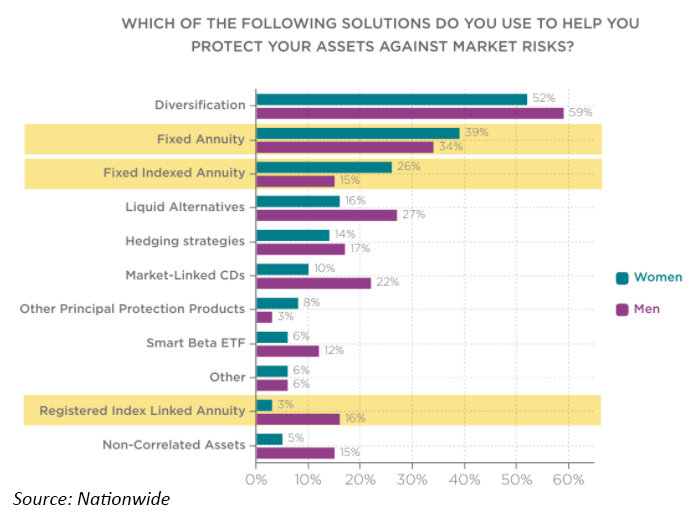Registered index-linked annuity (Rilas) have emerged as the product of choice for retirement investors during the pandemic as fixed index annuities (FIAs) continued to suffer the impact of low interest rates.
Annuity sales in the fourth quarter of 2020 have reached levels recorded before the Covid-19 pandemic despite less than favourable economic conditions, according to the Secure Retirement Institute (SRI).
Registered index-linked annuity Rilas sales emerged as the breakout star of 2020 while FIAs were a casualty of the historically low interest rate environment.
Rila sales totalled US$8.3 billion in the fourth quarter, a 68% jump from Q4 19 and 33% higher than the US$6.3 billion recorded in Q3 20.
We've seen a continued rise in Rilas in the fourth quarter, as well as elevated fixed-rate deferred annuity sales
In 2020, total Rila sales were US$24 billion, a 37% climb from 2019 sales and represented nearly a quarter of all variable annuity (VA) sales for the year.
FIA sales were US$14.3 billion in Q4 20, a 15% fall compared with fourth quarter 2019 results. After record-breaking sales in 2019, FIA levels decreased by 24% to US$55.7 billion in 2020.
Todd Giesing (pictured), director of annuity research at SRI, notes that even though economic factors haven't improved significantly, interest rates are getting better despite still remaining low.
“We've seen a continued rise in Rilas in the fourth quarter, as well as elevated fixed-rate deferred annuity sales. Even though they are on the decline from their peak in the third quarter, they're still significantly higher than what we've historically seen,” he said.
A recent survey looking into investor behaviour and gender specific preferences conducted by Nationwide found that while 16% of male clients would opt for a Rila to protect their assets, only three percent of female clients would choose the same product.
However, female clients formed the majority of those interested in a FIA (26%), compared to 15% of men.
While SRI does not currently collect gender specific information on investor interests, Giesing notes that current economic conditions have made Rila products uniquely attractive to consumers seeking both downside protection and investment growth, drawing new manufacturers to the market.
“Instead of new entrants cannibalising market share from existing manufacturers, we saw strong sales growth for Rila products across the industry driving fourth quarter VA sales and overall industry sales to reach pre-pandemic levels,” he said.
Interest rates
“Low interest rates continue to impact cap rates and guaranteed living benefits for FIA products, making them less competitive than they were a year ago,” says Giesing. “SRI projects slow improvement in the FIA market in 2021 as the economy improves and manufacturers and distributors overcome operational issues brought on by the pandemic.”
Fixed rate deferred annuity sales stood at US$13.3 billion in the fourth quarter of 2020, reflecting a boost of 41% from the prior year.
In 2020, fixed rate deferred annuity sales totalled US$51.7 billion, a 9% increase from 2019 results and the highest fixed-rate deferred annuity sales on record since the Great Recession.
Total fixed annuity sales were US$30.8 billion in the fourth quarter, while overall sales for the year were US$120.2 billion, representing a 14% decline compared with 2019 results.
Interest rates are expected to rise slowly in 2021 which may have an interesting impact on annuity sales.
“For instance, we anticipate that fixed rate deferred sales will decline since in 2020, we had multiple factors that increased sales of fixed rate deferred products. These include market volatility, and a more alternative options for principal protection which was dwindling,” said Giesing.

